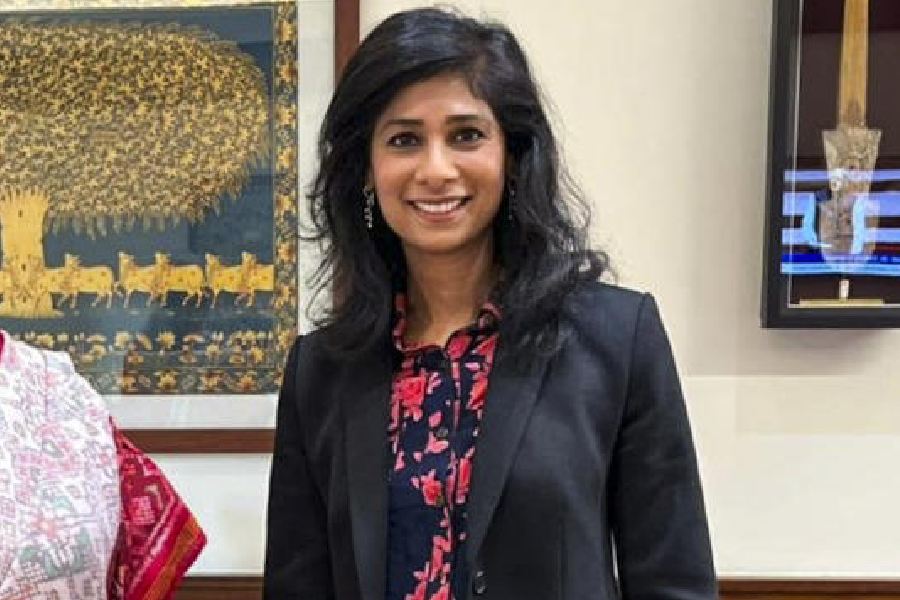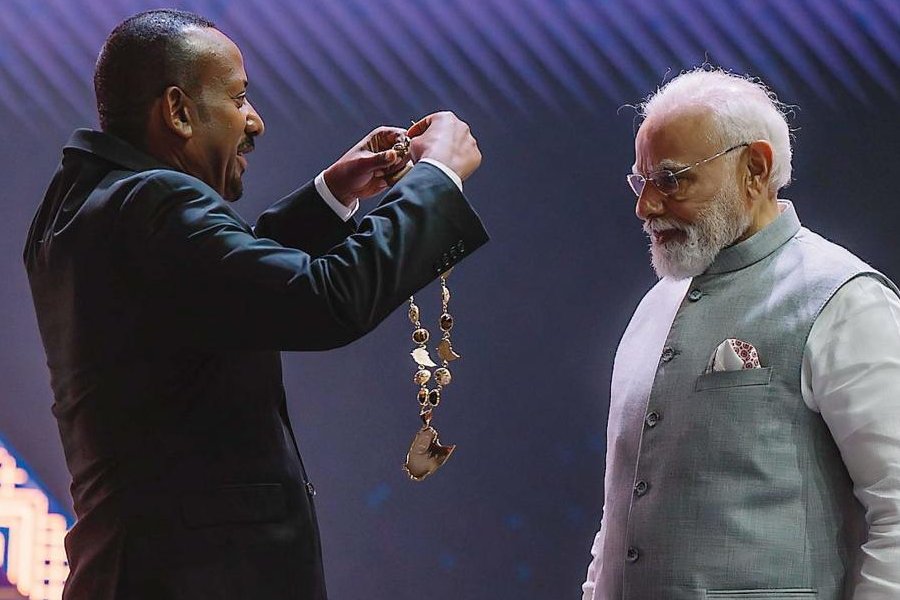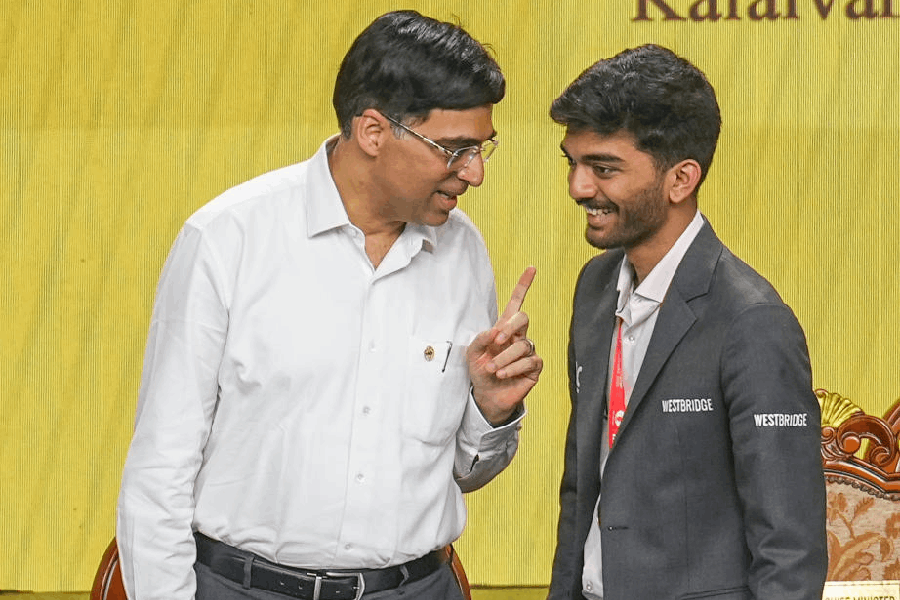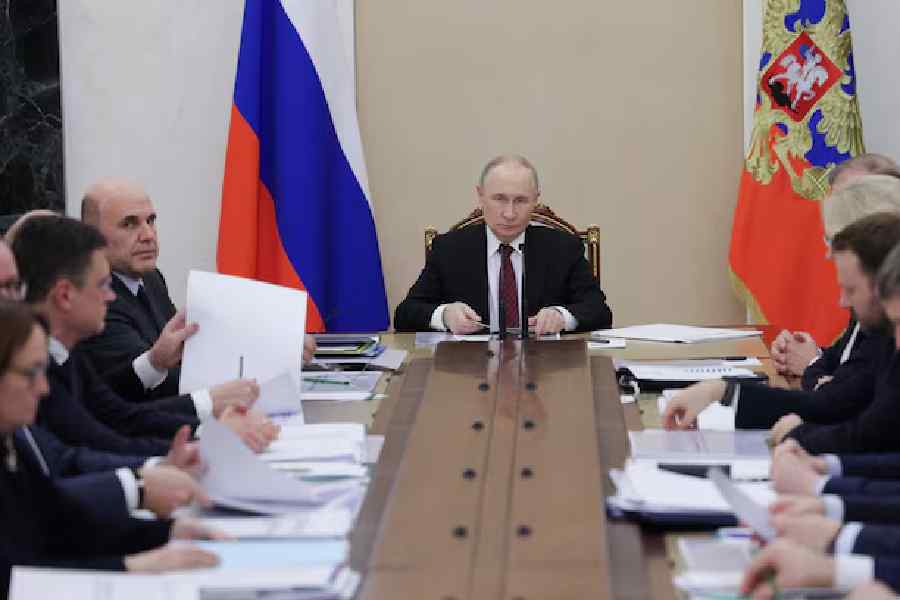 |
| CANNES CONNECT: Shekhar Kapur |
Making a song and dance about Bollywood
One of the Indian highlights at the Cannes Film Festival this year — possibly the Indian highlight — will be an 81-minute feature called Bollywood: The Greatest Love Story Ever Told.
The film weaves together snatches of familiar songs and scenes from a wide variety of well-known Hindi movies in an attempt to offer viewers a sense of what gives Bollywood its distinctive character. It contains very few “interviews” with experts.
The idea is that of Shekhar Kapur.
While serving on the main Cannes jury last year, the director had a conversation with Thierry Fremaux, one of the main organisers of the festival.
“He spoke of the international audience’s fascination with Bollywood,” recalled Shekhar. “But it was his inability to find a film that he could show in the main section that urged me to make a film especially for Cannes.”
It will be shown “out of competition” at the 2,300-seat Grand Lumière, the festival’s main theatre on the evening of Saturday, May 14.
The film has been produced by Shekhar, with Ronnie Screwvala and Trishya Screwvala of UTV Motion Pictures acting as co-producers. The director is Rakeysh Omprakash Mehra of Rang De Basanti fame.
Ironically, although the film is not a documentary — in fact, Shekhar dislikes the format — he chose to bring in prize-winning Jeff Zimbalist, to add a detached outsider’s perspective to the project. Zimbalist, an American, is best known for his highly regarded documentaries, Favela Rising, The Two Escobars, and The Scribe of Urabá.
Shekhar expects to introduce his baby in Cannes. “Over the years music and dance in Indian cinema have reflected the changing history of India and the changing mores of India.”
So what are the films he has used?
“There are so many. Well, Mughal-e-Azam is there, Mother India is in there. Some of the Shammi Kapoor films are there, Dewaar is in there,” he revealed. “When you come into the modern times Sheela ki jawani is there, Dabangg is there, one of the big modern hits.”
Sholay?
He nodded. “Sholay is in there. There are little bits from each film. There is no film that has a maximum amount, it is all in little bits.”
Guru Dutt?
“Guru Dutt is there.”
Which one?
“Pyaasa is there. It is all about songs and music.”
Is he happy with the finished product?
“Yeah! It was fun, lots of fun. It’s showing at the Lumière on Saturday night which is the best launch it can get.”
Shekhar said he would be thrilled if at the end audiences spontaneously break into dance.
 |
| REEL RECALL: A still from Satyajit Ray’s film Teen Kanya |
Tagore in town
Bengali cinema loses out in Britain to the steamrollering effect of Bollywood and the relentless PR inflicted by its top stars in London. But the British Film Institute is making amends by celebrating Tagore’s 150th birth anniversary by screening “a season of films based on the Nobel Laureate’s literary and musical works”.
It will incorporate “both classics by Satyajit Ray (Three Daughters 1961) and Ritwik Ghatak (The Cloud Capped Star 1960) as well as more contemporary work, including Chokher Bali: A Passion Play 2003)”.
Ray’s Charulata (The Lonely Wife 1964) will also be shown, as well as his 1961 documentary made to mark Tagore’s birth centenary. Although these are all old films, there is a purpose in showing them because they come fresh to new generations.
Last week, a friend, a senior businessman, telephoned, “What’s happening with Tagore?”
He indicated that if there was a suitable cause, he would like to fund it, which was kind of him.
I had to tell him that among the new generation of British Indians, Tagore is an unknown quantity. No one has quite worked out how to make Tagore relevant to British-born Indians. He is seen as being of interest only to some Bengalis.
I am glad Sharmila Tagore will put in an appearance during the Tagore season, which will be introduced by Sangeeta Datta. But I suppose if Aishwarya Rai came to talk about her role in Chokher Bali, British Asians would pack the place. That said, anyone who has seen Devdas will know she does a Bengali “eesh” very well.
 |
Duncan’s dilemma
Whatever else, cricket commentators in India, including former players, should try not to be racist about the new Rhodesia-born coach, Duncan Fletcher.
The question to ask is, “If Indian coaches are that good, how come they are not hired by England, Australia and other countries?”
Or is it the case that the cultural mindset of Indian players, especially from “the Hindi belt” — which sounds slightly disparaging — is such that they can only be inspired by desi coaches?
And if foreign experts can be brought in to improve Indian cricket, why can’t we do the same in politics and public administration? I think I have convinced myself that the cleanup and beautification of Calcutta — and, architecturally, Calcutta is one of the most remarkable cities in the world — should be handed over (by Mamata?) to the Brits (because we have certainly proved we cannot do it for ourselves — no one clears the rubbish piling up outside the Milk Colony in Belgachia Villa).
My main worry is that coaches are like guns for hire — and that Fletcher’s passions have been spent on England.
But I have been analysing Fletcher’s analysis written on March 28 — two days before the India-Pakistan semi-final — which indicates that he does understand what’s what: “Judging by the manner of their victory against Australia, India have to be the favourites now, followed by Sri Lanka... Gambhir has added a toughness to the team that I always thought they were lacking. He is a little scrapper, feisty and quick to chirp back at the bowlers. Raina has been a dangerous player for a while now, very clever and with a deft ability to manipulate the ball all around the ground... Most of the Pakistani batsmen would struggle to get a place in that Indian top seven... It should be India vs Sri Lanka in the final.”
Brand Blair
What now for Tony Blair, who remains a sort of roving ambassador in the Middle East, puts in a lot of effort into his interfaith foundation — he is a committed Christian — and is paid generously for consultancy work and giving lectures?
Despite his protestations, most people think his decision to go to war against Iraq was illegal — or, at least, not justified by the evidence.
But Brand Blair has been damaged, grievously and possibly fatally, by the Queen’s decision to ban him from the royal wedding. His wife Cherie made a bad mistake when she refused to curtsey to the Queen.
 |
| DESTINATION INDIA: Kate middleton |
Tittle tattle
There is no indication that Kate and William, which many people will still call them — rather than the more formal Duke and Duchess of Cambridge — will holiday in India this time. However, I expect them to visit India sooner rather than later.
Charles is very pro-Indian. Diana, too, made a special point of going to Calcutta to see Mother Teresa’s home — I was with her. Diana experimented in Pakistan with a salwar kameez, so the logical progression would be for Kate to wear a white sari with a red border.










